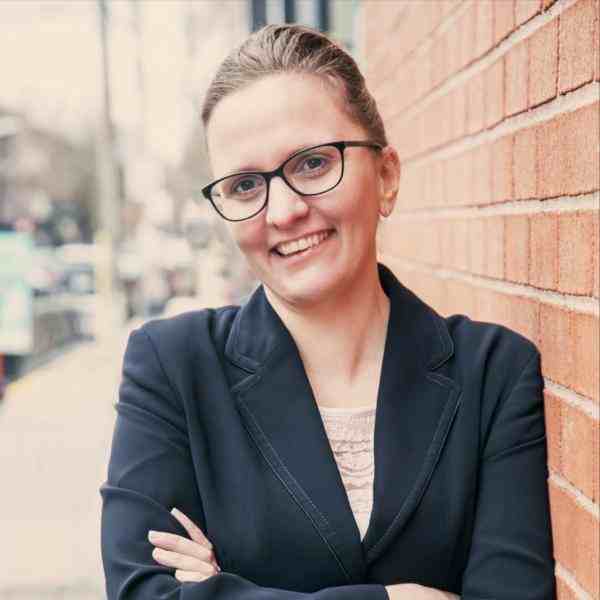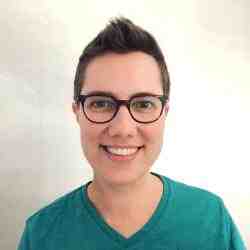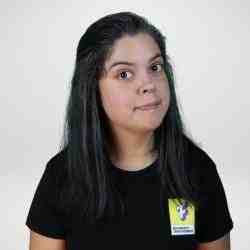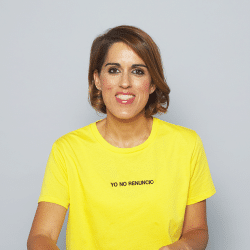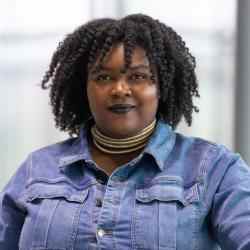Introdução
Ilona Dougherty is fostering civic participation among apathetic youth by enhancing their democratic literacy. To do so she has created a multi-layered strategy using popular music concerts, workshops, and a youth-oriented online platform to cultivate volunteerism and increase civic engagement. She also builds bridges between Members of Parliament, elected officials, and youth, opening opportunities for direct dialogue. Since 2004, Ilona has been using art and technology to educate Canadian youth about democracy in order to increase voting rates and citizen engagement. Apathy is Boring also builds bridges between politicians and youth, opening opportunities for sustainable dialogue. Apathy is Boring has reached more than 13,000 youth through concerts and events and tens of thousands of youth visit the website annually. Ilona is working with non-government organizations, educators, elected Officials, and employers looking to better engage youth in decision-making.
A nova ideia
Ilona is committed to getting apathetic youth involved with issues that impact their lives and their communities, thus increasing their civic engagement. She uses music, art, and technology as tools to connect with disengaged youth and spread democratic awareness and civic participation. Through concerts organized all over Canada, featuring popular Canadian musicians, young audiences gain awareness about community issues and volunteerism. Ilona also raises civic participation through democratic literacy workshops and an interactive web platform targeted at youth and citizen organizations (COs). The concerts and public events serve as “low risk entry points” to get large audiences to become aware of the importance of civic participation, while the workshops, website, and subsequent volunteering opportunities give youth tangible skills and avenues to get involved.
Ilona’s organization, Apathy is Boring (A is B), targets apathetic youth who remain outside the democratic process. These youth come from diverse backgrounds, including underserved as well as middle-class neighborhoods, and First Nations communities. She aims to increase youth voter turn out and increase youth community engagement.
Ilona is also bridging youth with Members of Parliament by providing a platform for dialogue. A is B sensitizes Members of Parliament and candidates about effective ways to connect with youth; increasing the key player’s awareness and understanding of the importance of youth issues.
O problema
Canada’s democratic system is facing significant challenges as a result of young peoples increasing apathy toward democracy and civic participation more broadly. Over the last few years, youth voting rates have declined, volunteerism has fallen, indifference toward civic awareness and participation has grown, and there has been a striking disconnect between youth and their elected officials. Fewer than 44 percent of voters under 24 cast a ballot in the last federal election (Dominion Institute). These statistics show low voter turnout despite the fact that 78 percent of eligible youth (aged 15 to 34) surveyed prior to the 2006 federal elections indicated that they intended to vote in that year’s federal election (Youth Voter DNA Report, D-Code 2006). This demonstrates that young people require information about how to vote or lack a convincing reason to vote.
Although a few organizations have sprung up as a result of this concerning situation, these initiatives are often sporadic and lack a long-term vision. A number of youth organizations are founded at election time but are lost after the election campaign ends. For example, a federal youth program organized by Elections Canada offers limited services and is only active near election time. Moreover, many such organizations and COs tend to focus on already engaged youth who are well informed, vote and are active citizens, and fail to reach out to youth most in need of democratic and civic literacy.
A non-scientific study of 3,000 under-engaged youth, carried out by A is B in 2008 revealed that voter turnout among youth in Canada is low because they are not sufficiently informed to make a decision about candidates, find the process inaccessible, or feel that voting does not make a difference. The majority of young people remain uninterested in all candidates’ debates, are under-informed about government programs, and feel their concerns are not addressed by political parties.
Elected officials overall inability to relate to young audiences also exacerbates the youths’ apathy toward democratic processes. Members of Parliament and government officials often do not know how to integrate issues relevant to youth into their speeches and electoral platforms, nor do they use a language that will truly resonate with young audiences.
As long as elected officials and their advisers do not begin to see youth as important constituents (since the majority does not vote), and youth begins to grasp how crucial civic engagement is to foster the democratic process, it will be difficult to reverse this situation. The challenge is to bridge the gap between traditional institutions where decision-making takes place and alternative forms of engagement where young people are already participating.
A estratégia
In order to foster democratic literacy and social involvement among youth, Ilona created Apathy is Boring in 2004. This is the first organization of its kind to systematically tackle the problem of youth disengagement by engaging young people in volunteer opportunities and the democratic process through creative means; by mentoring elected officials to effectively address issues relevant to youth to increase civic participation; and by providing young people and elected officials with avenues for dialogue.
From the beginning, Ilona was adamant about creating a democratic literacy strategy that would not simply cater to active youth but rather attract disengaged young people and increase their participation in the democratic process. In order to do so, she began creating “low risk entry points” to bring democratic literacy into the minds and hearts of youth by coupling popular music concerts with informative discussions about the importance of civic engagement. Elected officials and CO leaders are keynote speakers at these events and the audience members get the opportunity to talk with their community leaders in an informal but educational setting. These events are the first step in providing youth with easy ways to get involved in their communities. The concerts cater to diverse audiences, including artists from Indie to Hip Hop and are organized three to four times a year throughout Canada, in big cities as well as in remote communities. Ilona engages her participants using youthful language and short, humorous and often sarcastic messaging with an edgy image that attracts media, youth, and artists alike. Moreover, A is B partners with 30 to 40 other existing festivals and concerts yearly to further spread its impact throughout Canada.
To increase youth’s likeliness to become active citizens, A is B stays connected to the concerts’ audiences and follows up with them through surveys and conversations conducted by its 250 active volunteers. A is B’s interactive web platform is another powerful tool where Ilona disseminates information to create opportunities for volunteer work and improve voter turnout. Youth can easily identify with her method and witty language which thus contributes to bridging the information gap and makes civic engagement fun. The target age group identified here is between 18 and 35. Through this website Ilona aims not only to disseminate information but also to create knowledge about the changing habits of young people over time through surveys. She will thus not only be able to inform her strategies according to the needs identified in those studies but will also have a tool to measure the impact A is B may have had on voting habits among youth or their propensity to volunteer.
The concerts and website alone were not sufficient to satisfy Ilona’s desire to truly change patterns in the way youth understand their roles in society. Knowing that apathetic youth can easily become overwhelmed if the demands on them are too high, she has created a “ladder” of involvement. The ladder ranges from receiving up-to-date information and invitations to government consultations through her website, to participating in volunteering opportunities at events, to engaging in educational dialogues, and finally, becoming long-term volunteers in COs.
A is B organizes workshops and seminars where youth acquire concrete tools that foster community involvement and provide them with important skills as active citizens. Ilona uses popular education methods in her seminars about public policy change, voting and about “How Volunteering Will Get [Them] a Job.” In order to reach an even greater audience, Ilona offers workshops to COs that work with youth to share her innovative strategies for youth engagement, and integrate democratic literacy into their youth programs. Through these consulting projects, A is B is increasing volunteerism not only in its own organization, but also in other COs. This is an income-generating strategy that contributes to A is B’s sustainability.
Realizing that youth apathy is a problem that needs to be tackled at the government level, Ilona developed programming for elected and government officials as well. A is B mentors elected officials to develop platforms and messaging tactics that resonate more with youth in order to increase their interest in the democratic process and their representation at all levels of government. To improve the way elected officials and parties interact with youth, A is B has developed a manual with useful information on how to encourage youth engagement in their constituencies, as well as ways to increase youth participation, and create a youth-friendly agenda. These electronic tool kits are sent to candidates all over Canada after which the A is B staff follows up offering support and further assistance. Moreover, Ilona is fostering dialogue between elected officials and youth by reaching out and educating Members of Parliament about youth issues and offering them valuable opportunities to engage them during concerts and workshops. A is B also advocates for youth by providing policy recommendations to government based on their extensive knowledge about the attitudes of youth toward the democratic process. For example, new identification laws by Election Canada make it mandatory for voters to have a proof of address to be eligible to vote. A is B, through its surveys, found that this was very inconvenient to students living in school residences, the homeless population, and northern communities. Thus, A is B recommended to Elections Canada that it consider allowing alternative identification to be used. This proposal is currently under consideration. A is B has also been greatly supported by the Governor General of Canada who recognized the uniqueness and importance of Ilona’s work and is bringing her message to Members of Parliament as well as to the leadership of other countries such as Norway and the Ukraine. In 2008 A is B had 250 youth volunteers, which was a large increase from the previous year. More than 40 artists are engaged with the organization, which has thus far organized dozens of workshops with other COs. In 2008, 11,000 youth attended A is B concerts and in 2009, and A is B also surveys approximately 25 percent of the audience at concerts and it has collected opinions from about 3,000 youth in 2009. A is B’s website has had more than 100,000 unique visitors since 2007.
A is B has had several funders, including The J.W. McConnell Family Foundation and the Department of Canadian Heritage and many others who have contributed to the stability and growth of A is B staff (six full-time, and three interns). A is B is also supported by over 40 important organizational partners that greatly contribute to the organization’s outreach strategy and sustainability. Ilona’s sources of funding are diverse and come from government, foundations, the corporate sector, and individual donors. Understanding the importance of being less dependent on outside resources, Ilona has developed an income generation strategy that includes consulting for various organizations, and leading workshops.
Ilona is starting to build links with organizations and individuals globally, with the aim of spreading her initiative to other countries in the medium term. People in Norway, South Africa, Sierra Leone, Burkina Faso, and the Ukraine have already expressed an interest in replicating her approach to civic engagement, but Ilona is focused on making her initiative stronger in Canada first before launching other initiatives.
A pessoa
lona grew up in Whitehorse, Yukon and was exposed to activism and civic engagement at an early age. Her parents were activists: Her mother is an educational psychologist working with Aboriginal and rural communities and her father works in the area of social justice.
Before the age of 20, Ilona co-founded two COs, all of which are vibrant organizations to this day. At the age of 14, she co-founded Students Aware of our World (now Bringing Youth Towards Equality) in Yukon with three other youth. Three years later, she co-founded Youth Environmental Network, with three other people and in the same year, Ilona was appointed a youth delegate to the United Nations for her involvement in the Canada Environment Network. She felt very disillusioned by this experience since youth, like herself, were invited to participate but were not given a voice at the UN summit.
Ilona pursued a degree as a choreographer at a university she says was the best business degree she could ever have completed, as it forced her to be creative to make ends meet. When Ilona was 12 years old, she was diagnosed with a chronic illness, which would eventually prevent her from being able to dance. However, her deep passion for dance prompted her to complete a degree in the subject and led her to integrate her interest in the arts with the social sector.
During a casual discussion with a Member of Parliament, Ilona was struck by the huge disconnect between the democratic process and youth involvement. At 23, Ilona created Apathy is Boring to bring her interest in the arts together with engaging youth in the democratic process.
